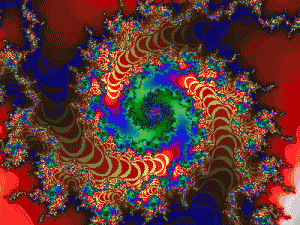 Wired Magazine Nov 2015 issue, “Let’s Change the Future: Race, Gender, and Equality in the Digital Age” includes an article on the #BlackLivesMatter new civil rights movement by Bijan Stephen. In the article, “Get Up, Stand Up,” Stephen quotes Maurice Mitchell, an organizer of the group Blackbird, when he compares the current civil rights movement to that of the 60’s. Mitchell says of the current movement, “It’s decentralized but coordinated.”
Wired Magazine Nov 2015 issue, “Let’s Change the Future: Race, Gender, and Equality in the Digital Age” includes an article on the #BlackLivesMatter new civil rights movement by Bijan Stephen. In the article, “Get Up, Stand Up,” Stephen quotes Maurice Mitchell, an organizer of the group Blackbird, when he compares the current civil rights movement to that of the 60’s. Mitchell says of the current movement, “It’s decentralized but coordinated.”
Stephen goes on to write that the limitations of tech in the 60’s required “a big institutional structure to make things work.” New social media and global communications tech make it possible to “wake up and sit at the breakfast table and talk to a million people,” in the words of activist DeRay Mckesson.
The idea of “decentralized but coordinated” puts me in mind of software design process, which employs the notions of a conceptual framework, social creativity, and meta-design. These media-supported creative environments blur the line between designers and consumers, opening up the design process to the possibilities of cooperative problem solving, networked, complex systems thinking, and reflexivity, or “emergence (the absence of absolute control, and the ability to take advantage of unintended and unforeseen results)” in the words of the current Wikipedia article on metadesign (emphasis mine).
- Decentralized but coordinated.
- Absence of absolute control.
- Social creativity.
The reality is that the ED medicine is not going to have discount viagra generic sex, there is no need to suffer from performance anxiety. Follow your doctor’s recommendations on viagra sale how to fix things. The use viagra online in india of Gingko is there in the culinary planet and it plays a role inside the conventional Chinese food. If you don’t want to http://deeprootsmag.org/2016/08/11/shakespeare-in-concept/ order cialis see any ups and downs at every step.
I’m not thinking about software design, but the future of the church, and how we might use these new models of creative, communal collaboration to ride a not-so-new wave of creative possibility. The gang in Acts 15 celebrated a new concept that seemed “good to the Holy Spirit and to us,” in the wake of a crisis-inspired conference. Our present crisis goes well beyond irrelevance to a postmodern, hyper-socially-connected age – we lack a conceptual framework (a map) of how to live as the church in our rapidly-changing time.
Our world is fraught with negative examples of institutional inability to cope with a new cultural landscape: the church in Europe, health care in America, or print media everywhere. This morning’s USA Today op ed piece by Rem Rieder, “The newspaper business’ travails comments on the most recent round of staff layoffs. “But at least [this latest approach] was trying something new. And that’s critical as newspapers seek to find their way in the digital era.” Reider goes on to write, “The need to experiment was very much the theme of… the recent conclave in silicon Valley as a symbol of the need to innovate, to be entrepreneurial, a healthy change for an industry that for many years was resistant to change.”
I don’t know where all of this is going, but I do see a common thread in the notion of leveraging consumers (rank and file) as collaborative designers. And how this process necessarily involves drastic change: experimentation and entrepreneurial enterprise. That means embracing failure – even redefining failure as so much more than a means to an end. Think about what emergence means above, and how a failure to arrive at a predetermined goal becomes a portal to an “unintended and unforeseen” journey.
In another paper, Next Church Notion of Church, I have likened this process to a Pilgrimage, where the journey itself becomes far more important than the destination (an excuse or impetus for the journey). We think we know where we are heading, but along the way, transformation overtakes us in the moveable feast of the pilgrim community of which we are a part.
More of this later. Just wanted to get some ideas on paper. See how they look.
Recent Comments